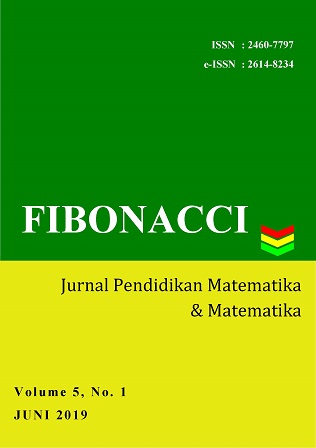PENANGANAN OVERDISPERSI PADA PEMODELAN DATA CACAH DENGAN RESPON NOL BERLEBIH (ZERO-INFLATED)
Main Article Content
Abstract
Article Details
Authors who publish with this journal agree to the following terms:
- Authors retain copyright and grant the journal right of first publication with the work simultaneously licensed under a Creative Commons Attribution License that allows others to share the work with an acknowledgement of the work's authorship and initial publication in this journal.
- Authors are able to enter into separate, additional contractual arrangements for the non-exclusive distribution of the journal's published version of the work (e.g., post it to an institutional repository or publish it in a book), with an acknowledgement of its initial publication in this journal.
- Authors are permitted and encouraged to post their work online (e.g., in institutional repositories or on their website) prior to and during the submission process, as it can lead to productive exchanges, as well as earlier and greater citation of published work (See The Effect of Open Access).
References
Hausman, J, BH. Hall and Z Griliches. 1984. “Econometric Models for Count Data with an Application to the Patents-R&D Relationship.” Econometrica.Vol. 52 (4), pp: 909-938.
Ismail, N and Abdul AJ. 2007. Handling Overdispersion with Negative Binomial and Generalized Poisson Regression Models. Virginia: Casualty Actuarial Society Forum, Winter 2007.
Jansakul N, Hinde JP. 2002. “Score Test for Zero-Inflated Poisson Models”. Computational Statistics and Data Analysis. Vol. 40 (1) :75-96.
Jeong, KM. 2017. “Modelling Count Responses with Overdispersion”. Communication of the Korean Statistical Society Vol. 19 (6), pp: 761-770.
Jiang, Y. and L. House. 2017. “Comparison of the Performance of Count Data Models under Different Zero-Inflation Scenarios Using Simulation Studies”. In 2017 Annual Meeting, July 30-August 1, 2017. Chicago. Agricultural & Applied Economics Association.
Lambert, D. 1992. “Zero-Inflated Poisson Regression with Application to Defects in Manufacturing”. Technometrics. Vol. 34 (1), pp: 1-14.
McCullagh, P. and J. Nelder. 1989. Generalized Linear Models (second ed.). London: Chapman and Hall.
Naya H, Urioste JI, Chang YM, Motta MR, Kremer R, Gianola D. 2008. “A comparison between Poisson and zero-inflated Poisson regression models with an application to number of black spots in Corriedale sheep”. Genetics Selection Evolution. Vol. 40 (4), pp: 379-394.
Nelder, J.A. and Wedderburn, R.W.M. 1972. “Generalized Linear Models”. Journal of the Royal Statistical Society, Series A. Vol. 135 (3), pp: 370-384.
Özdemir, T and Ecevit E. 2005. “Comparison of Chi-Square and Likelihood Ratio Chi-Square Tests: Power of Test”. Journal of Applied Sciences Research. Vol. 1 (2), pp: 242-244.
Palmgren, Juni. 1981. “The Fisher Information Matrix for Log-Linear Models Arguing Conditionally in the Observed Explanatory Variables”. Biometrika. Vol. 68 (2), pp: 563-566.
Zeiless et. al. 2008. “Regression Models for Count Data in R”. Journal of Statistical Software Vol. 27 (8), pp: 1-25.

